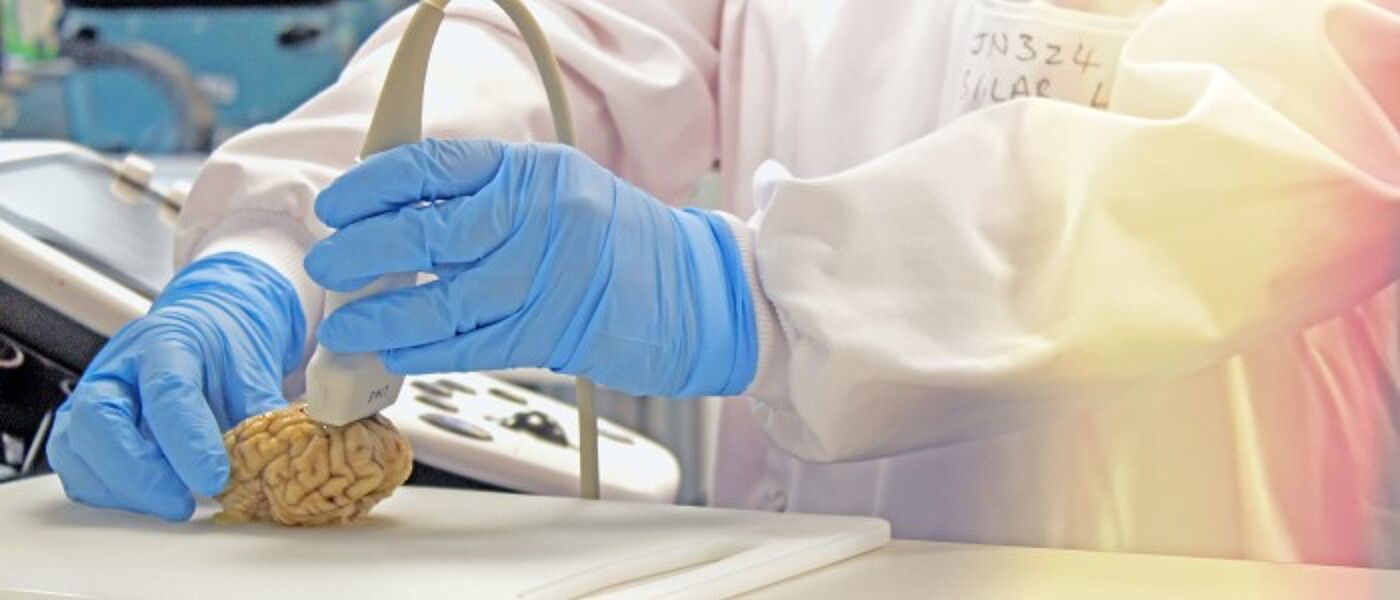Medical Ultrasound

Imaging
Ultrasound Imaging is the most common use of ultrasound experienced by the public. It is often used as the first diagnostic tool to non-invasively examine the abdomen, with scans during pregnancy of the developing baby, and examination of the liver and other organs. We are developing new technologies for high resolution ultrasound imaging for clinical applications, investigating new materials to promote highly sensitive devices, and device miniaturisation. We are also now able to employ Machine Learning in the imaging process, for example to accurately differentiate tumourous material from healthy cells.
Notable Staff: Prof Sandy Cochran, Dr Hubin Zhao
Key Projects: Sonopill

Precision Surgery
The primary aim of our research into precision surgery is to promote significantly improved outcomes for the patient. Our expertise in the design, fabrication, and optimisation of ultrasonic transducers now allows us to deliver a range of configurations, including Langevin and flextensional, which are able to surgically cut different hard and soft tissues with precision, with reductions in tissue necrosis and improvements in clinician control. We are driving this new generation of precision surgery technology through avenues including robotics and advanced materials, such as shape memory alloys, to introduce complex dynamic features. Procedures already benefitting from our research include orthopaedics, soft tissue surgeries, and biopsies.
Notable Staff: Prof Margaret Lucas, Prof Sandy Cochran, Dr Andrew Feeney
Key Projects: Ultrasurge

Robotics and AI-Enhanced Medicine
We are now building up significant expertise in the use of artificial intelligence and robotics in the administration and monitoring of medical procedures. A recent example of this studied by our Centre is in anaesthesia, for imitating neural networks to enable clinical decision making, and rapid analysis of procedure metrics. We are also developing advanced artificial intelligence hardware which can be applied for imaging. Some of our research has been focused on self-diagnosis sensing, for devices and systems including implantable optoelectronics and neural probes.
Notable Staff: Dr Hubin Zhao, Dr Kevin Worrall

Sensing and Micromanipulation
Our Centre conducts leading research into spintronic and magnetic sensors for point-of-care diagnostics and wearable devices. Our research has investigated sensor concepts for diverse medical applications such as malaria diagnostics and neonatal neuromorphic ECG. We also investigate beamforming and micromanipulation, where we can create forces on biological materials to study and explore their nature. Examples include electrophoresis and optoelectronic tweezers. Our capabilities also extend to advanced biosensors, for example in the apoptosis of muscular tissue to treat cardiovascular diseases.
Notable Staff: Prof Steven Neale, Prof Hadi Heidari, Prof Sandy Cochran
Key Projects: WiseCure, HERMES, Micromanipulation

Targeted Drug Delivery
Ultrasound can be specifically targeted and focused for a range of processes, including drug delivery and the disruption of biological tissues for either treatment or therapy. To conduct these processes with effectiveness, contrast agent microbubble suspensions are often required to be injected. Our research here focuses on understanding and utilising acoustic cavitation, the bubble mechanisms which result from the application of focused ultrasound, and microbubbles for medical procedures. Focused ultrasound can also be used to perform targeted drug delivery, for example through interactions with specific encapsulated drug carriers.
Notable Staff: Dr Paul Prentice, Prof Sandy Cochran
Key Projects: Cavlab

Wearable Devices
We are focusing on wearable devices for healthcare and health monitoring applications. We focus on manufacture through advanced nanofabrication processes, with deployment in different parts of the body, from brain implants to upper-body energy harvesters. Implantable electronics and devices present many exciting opportunities for the future. We are developing miniaturised magnetic devices for the next generation of wearable magnetomyography technology, and we have made significant progress in other wearable and implantable devices such as electronic contact lenses and wrist-gesture devices. Our research into energy harvesting, for example from the upper limbs, involves cutting-edge research into photovoltaic cells and piezoelectric materials.
Notable Staff: Dr Hadi Heidari, Dr Hubin Zhao, Dr Andrew Feeney

